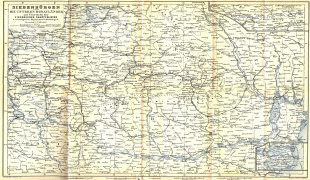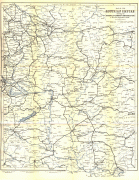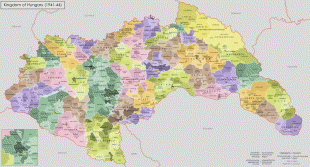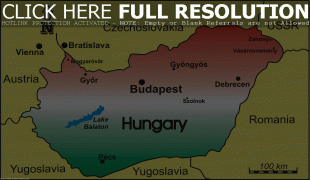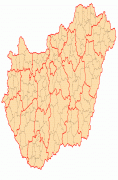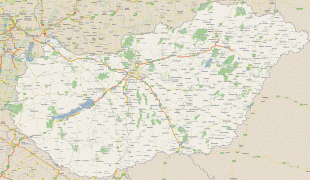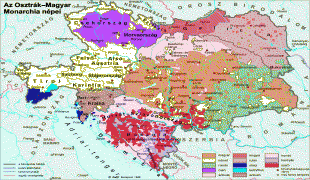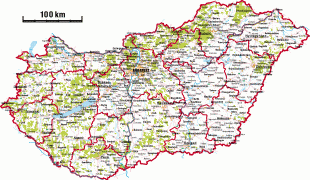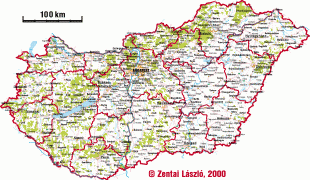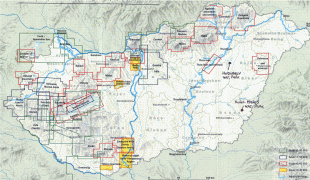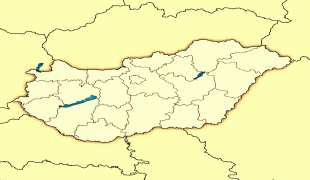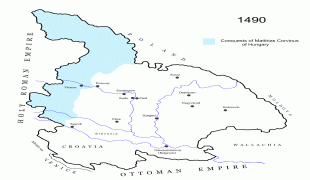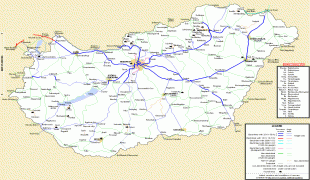Hungary
 |
 |
| Flag of Hungary | |
The territory of present-day Hungary has for centuries been a crossroads for various peoples, including Celts, Romans, Germanic tribes, Huns, West Slavs and the Avars. The foundation of the Hungarian state was established in the late 9th century AD with the conquest of the Carpathian Basin by Hungarian grand prince Árpád. His great-grandson Stephen I ascended the throne in 1000, converting his realm to a Christian kingdom. By the 12th century, Hungary became a regional power, reaching its cultural and political height in the 15th century. Following the Battle of Mohács in 1526, it was partially occupied by the Ottoman Empire (1541–1699). Hungary came under Habsburg rule at the turn of the 18th century, later joining with the Austrian Empire to form Austria-Hungary, a major power into the early 20th century.
Austria-Hungary collapsed after World War I, and the subsequent Treaty of Trianon established Hungary's current borders, resulting in the loss of 71% of its territory, 58% of its population, and 32% of ethnic Hungarians. Following the tumultuous interwar period, Hungary joined the Axis powers in World War II, suffering significant damage and casualties. Postwar Hungary became a satellite state of the Soviet Union, leading to the establishment of the Hungarian People's Republic. Following the failed 1956 revolution, Hungary became a comparatively freer, though still repressed, member of the Eastern Bloc. The removal of Hungary's border fence with Austria accelerated the collapse of the Eastern Bloc and subsequently the Soviet Union. On 23 October 1989, Hungary again became a democratic parliamentary republic. Hungary joined the European Union in 2004 and has been part of the Schengen Area since 2007.
Hungary is a middle power in international affairs, owing mostly to its cultural and economic influence. It is a high-income economy ranking 46th, very high human development index, where citizens enjoy universal health care and tuition-free secondary education. Hungary has a long history of significant contributions to arts, music, literature, sports, science and technology. It is a popular tourist destination in Europe, drawing 24.5 million international tourists in 2019. It is a member of numerous international organisations, including the Council of Europe, NATO, United Nations, World Health Organization, World Trade Organization, World Bank, International Investment Bank, Asian Infrastructure Investment Bank, and the Visegrád Group.
The "H" in the name of Hungary (and Latin Hungaria) is most likely derived from historical associations with the Huns, who had settled Hungary prior to the Avars. The rest of the word comes from the Latinised form of Byzantine Greek Oungroi (Οὔγγροι). The Greek name might be borrowed from Old Bulgarian ągrinŭ, in turn borrowed from Oghur-Turkic Onogur ('ten [tribes of the] Ogurs'), perhaps entering Slavic through a dialectal *Ongur. Onogur was the collective name for the tribes who later joined the Bulgar tribal confederacy that ruled the eastern parts of Hungary after the Avars. Peter B. Golden also considers Árpád Berta's theory, who has suggested that the name derives from Khazar Turkic ongar (oŋ "right," oŋar- "to make something better, to put (it) right," oŋgar- “to make something better, to put (it) right,” oŋaru “towards the right") “rightwing”. This points to the idea that the pre-Conquest Magyar Union formed the "right wing" (= western wing) of the Khazar military forces.
The Hungarian endonym is Magyarország, composed of magyar ('Hungarian') and ország ('country'). The name "Magyar", which refers to the people of the country, more accurately reflects the name of the country in some other languages such as Turkish, Persian and other languages as Magyaristan or Land of Magyars or similar. The word magyar is taken from the name of one of the seven major semi-nomadic Hungarian tribes, magyeri. The first element magy is likely from proto-Ugric *mäńć- 'man, person', also found in the name of the Mansi people (mäńćī, mańśi, måńś). The second element eri, 'man, men, lineage', survives in Hungarian férj 'husband', and is cognate with Mari erge 'son', Finnish archaic yrkä 'young man'.
Currency / Language
| ISO | Currency | Symbol | Significant figures |
|---|---|---|---|
| HUF | Hungarian forint | Ft | 2 |
| ISO | Language |
|---|---|
| HU | Hungarian language |






